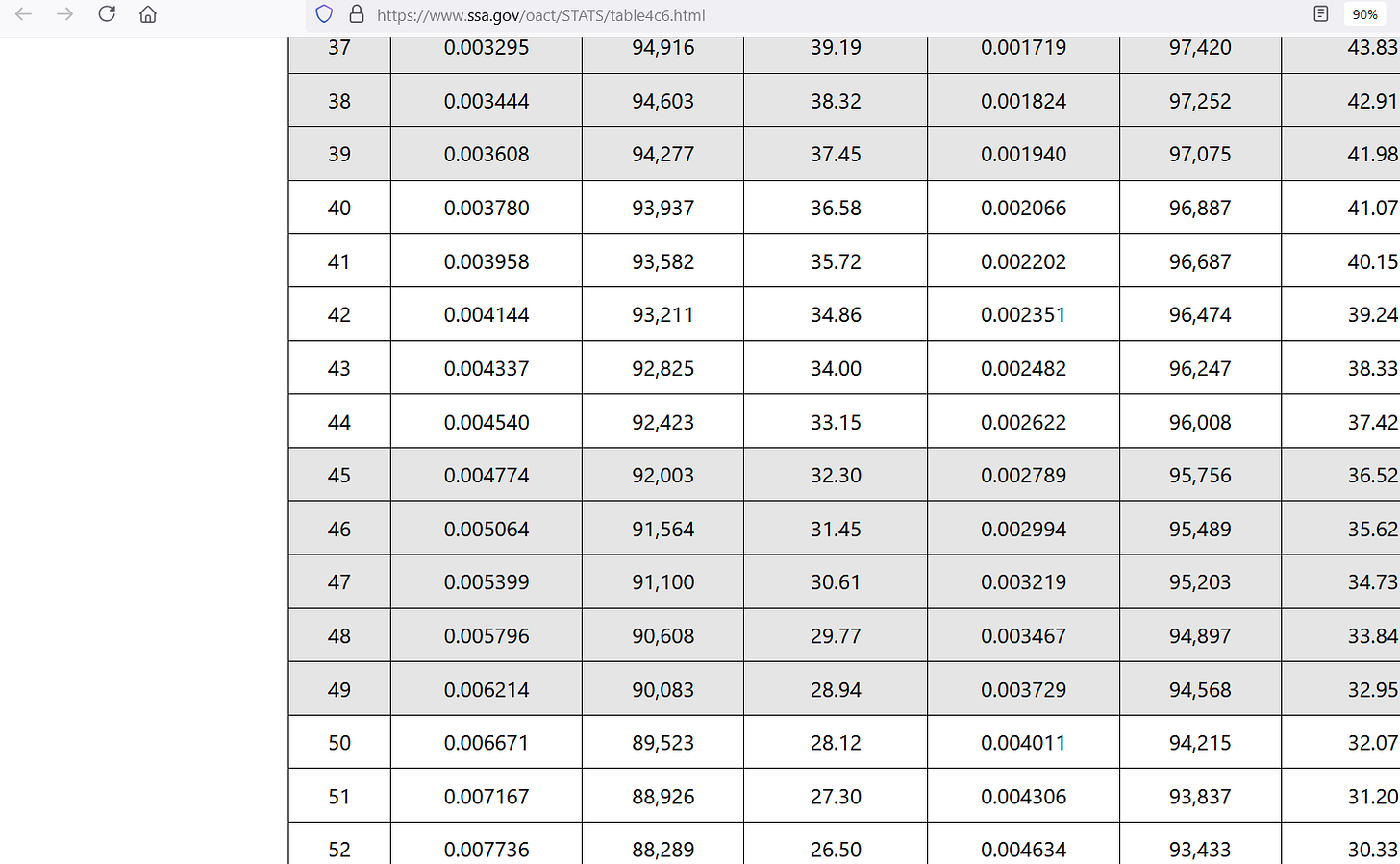John Leake posed a question on Substack regarding two “big tech” business partners dying within 48 hours of each other. To solve it, Bayes Theorem can be used:
At left, the term states “The probability of the hypothesis (H), given the evidence (E)” and the way you solve for it takes the 4 different terms found on the right side:
P(H): the background probability of your hypothesis being the truth
P(not H): complement of the probability your hypothesis is true (probability it is false)
P(E|H): the probability of witnessing the evidence, given that your hypothesis is true
P(E|not H): probability of witnessing the evidence, given that your hypothesis is false
For this case, H means foul play, and the two business partners were killed. Then “not H” means no foul play. “not-H” was assigned a probability of 0.99, meaning that — 99% of the time that business partners die together — it is pure coincidence. The evidence (E) is “death within 48 hours” and the chance of that comes from a life table:
One of the men was age 52 and at bottom left is the yearly chance to die: 0.007736. When converted to a chance to die in the next two days, it works out to 0.000042, or 42 chances in a million that a random 52 year-old male will die over the next 48 hours. That’s the chance of the evidence E, given no foul play, or P(E|not H) = 0.000042.
The chance of the evidence, given foul play, was set to 0.95, meaning that — when assassins really do attempt to kill two people — they are successful in getting both killed within 48 hours 19 times out of 20 (95% of the time that they try to). The resulting equation works out to a 99.56% chance that they were actually killed:
Using the verbal predicates which go along with paternity testing, the probability did not quite make it so that murder is “practically proven” here though, but only “extremely likely” to have been the case:
Reference
[What it takes for something to be “practically proven”] — A Few Things You Should Know About Paternity Tests (But Were Afraid to Ask). https://digitalcommons.law.scu.edu/cgi/viewcontent.cgi?referer=&httpsredir=1&article=2024&context=lawreview






